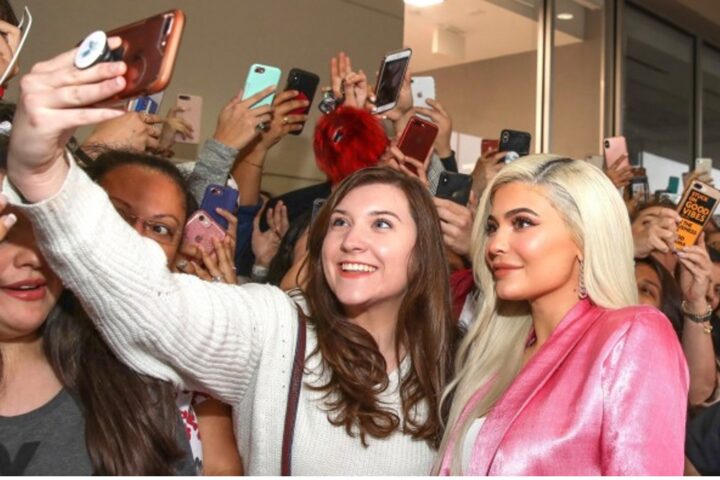NFTs (Non-Fungible Tokens) have been around for about 9 years but have recently become more noticeable and used in various industries, including the art industry, entertainment, real estate (virtual real estate) and quickly seduced the fashion industry to be tokenised and trending.
It is anticipated that over time NFTs, could become a vital issue for individuals and businesses in various sectors, a clear example of this is that during this quarter the highest sales were in the art segment, followed by collectibles and then metaverses according to the NFT Q2 2021 REPORT.
To understand the scope and purpose of NFTs in the fashion industry, we must first understand their definition: NFTs, are a special type of digital tradable certificate called a non-fungible token (special asset class on the blockchain) and are secured with blockchain technology (A ledger of records, with the ability to record the production chain of an industry, the traceability of a product, etc. And all this information will be shared with all nodes in real time, providing a high degree of transparency) whose properties are broadcast, notarization and serialization; and the types of blockchain networks are: Public (e.g. Bitcoin, Ethereum, Litecoin, etc.), private (e.g. Pound, Corda, etc.) and consortium.
Often NFTs are used to represent and restrict a unique claim on a digital asset that is copyable, sharable, and sticky, like a digital file; in that sense, it creates a type of authenticity and is defined by metadata. Therefore, NFTs can be said to be unique and not interchangeable with each other, and can take the form of trading cards, images of physical objects, tweets, GIFs, virtual real estate, etc.
Today, the NFTs market is valued at hundreds of millions of dollars in various sectors, which has encouraged more than one to follow this digital path; however, it also has a lot of criticism due to various factors such as the high consumption of computer power used to encrypt their tokens (producing an energy and environmental impact) and the fact of cases of piracy of certain digital works, but there is also discontent among creators because of the legal loopholes that still exist.
Despite the successes and failures, it is now possible to value and enhance the value of great digital works such as the case of:
“IRIDESCENCE”
It was the first digital haute couture dress in the world, a piece of digital art negotiable, traceable and collectible designed by the digital fashion house “The Fabricant”. The digital garment was sold for $9500 in 2019. Amber Jae Slooten, who was the creative director at The Fabricant, wrote the following text:
”A new cult is rising. The digital world is coming and we are no longer bound to physical space.
Our bodies are becoming fluid, our money decentralized, new powers are being formed. Slowly we are moving into a non-dual operating system. Intrinsic new patterns are being formed by systems that are closer to our nature by evolving rather than being controlled by a central power. This outfit provides a look into the future.
What can a body be when it is freed from physical restraints? What does identity mean when there are endless bits and bytes to express it? Connection is what we yearn for, and connection is what will rise now.
Our frequency is our energy in motion. It provides fluidity of movement, which is what forms this new line. We look for connection in technology. It is our new religion.”
For her part, the new owner Mary said “I had to imagine what it would look like to wear the dress. There was a huge element of surprise that you wouldn’t get with physical garments. It is like a green screen, you have to imagine what it will look like since the dress will be added in post production.
Of course this was the first of its kind, but I would love to be able to use the dress more often, and wear it wherever I like, not just limited to the pictures I got, but it should be something I can endlessly use over the pictures being taken so I can wear it in different situations.
In the future, it would help if digital clothing could be cheaper than physical clothing, so the element of pricing would be more attractive for people to purchase a digital item instead of a physical one.
It would be amazing to wear the outfit on TikTok to express yourself in these apps and have an extra special layer to use.
500 years ago we jumped on a ship to sail to the edge of the map, but all of the physical world has been discovered already. It is really exciting to discover a space that hasn’t been explored yet, like the blockchain space, especially in combination with apparel.”
The first luxury brand to launch its NFT
Gucci, the first luxury brand to launch its NFT, recently sold its bee-embroidered Gucci Dionysus bag for approximately $4,115, more than doubling its physical value; the sale was made through the Roblox gaming platform and the payment was made with virtual money from Roblox, note that the bag sold was not an “NFT” and the reason is because the bag cannot be exchanged outside that platform; however, we can highlight that it was in that way that the Gucci brand entered to conquer a gaming platform for the Z generation.
So if the Gucci Dionysus bag was not an NFT, what are Gucci’s NFT launches? The augmented reality trainers sold by the Italian fashion house was an NFT, the luxury brand sold it for $11.99 on its app and almost $9 on the app of fashion tech company Wanna, who was also its technological ally in achieving this feat and Gucci’s foray into the virtual world. The buyer of these trainers will never be able to physically pick them up or wear them; however, this is not a limitation for digital fashion buyers, as they will be able to debut them on Instagram, Roblox, VR Chat and other social networks as well as trade or auction them among digital fashion consumers.
But as Gucci’s desires are infinite, it already plans to work on a complete line of digital products after having launched a while ago in the world of video games, as well as some brands such as Balenciaga, Hermès, Louis Vuitton, Valentino, Marc Jacobs and Burberry.
Paris fashion capital and NFT
Paris Fashion week 2020 was celebrated differently because of the pandemic times we still live in and, this year 2021 Arianee and the Federation of Haute Couture and Fashion who coordinate Paris Fashion Week and Haute Couture Week, are working to deliver a great experience in the project that will allow brands to broadcast digital assets “NFT”, a fully personalized experience for journalists, influencer users, photographers, and buyers.
“This collaboration is an opportunity for Arianee to break new ground by co-creating a new form of NFT for one of the world’s leading fashion events. As a French start-up and open source consortium, we hope to contribute to strengthening Paris’ position not only as a fashion capital, but also as a capital of NFTs” commented NFT platform CEO and co-founder Pierre Nicolas Hurstel.
Smart Contracts in the fashion industry
To use smart contracts in the textile industry, we can think of the fourth industrial revolution and what it brought with it, namely, artificial intelligence and blockchain.
A smart contract consists of a computer program that executes agreements already established between two or more contracting parties with the aim that the conditions agreed upon in the contract are fulfilled. “The great contribution of smart contracts is that there is no need for a third party to verify whether or not the events have taken place”. Smart contracts began with the creation of Ethereum (a global open source platform for decentralized applications) and we could indicate that in its application to the fashion industry, it would be very beneficial to be integrated into the blockchain, thus allowing most likely to have greater confidence in the contractual agreements between the parties and be limited to extra payments for mediation or arbitration, if applicable, since its purpose is compliance and automated execution according to what has been agreed in alphanumeric language and established in an unmodifiable blockchain, so extreme diligence must be exercised in the terms and conditions to be agreed. This really is a very exciting, novel and extensive topic that deserves to be developed in a new section.
For now, I know that the big question for many readers is how to buy an NFT?
NFTs are sold on digital platforms, so you must choose the Marketplace in which you intend to buy, for it will be necessary to have a digital wallet service and cryptocurrencies, it will also be necessary to consider whether the NFT to be acquired, is part of an auction or is for sale at a certain time.
Intellectual property and NFTs
NFTs are treated as “works” and are therefore a great proposition for copyright protection.
When acquiring an NFT, the intellectual property rights are not acquired automatically, this will only be transferred if the author of the original work expressly provides it; that is, without the authorization of the author, only an implicit, non-exclusive license will be possessed for their personal use.
In that sense, the rights that a buyer acquires over an NFT will depend on its creator, whether they are commercial rights or not over the work, so it will be very important to review the terms and conditions before making the purchase.
Some people will only own the digital ownership over the NFT and not the copyright; In other words, they will have a certificate of ownership, but they will not be able to exploit them commercially; However, all is not lost since on certain occasions they will also be able to acquire the rights of transmission, exhibition, and distribution.
NFTs can also be protected as trademarks and create a large space for intellectual property itself, helping creators to protect and generate income from their creations, decrease the number of orphan works, counterfeits, and piracy.
It is also possible that when a creator sells an NFT, he may receive royalties if his work is sold by its initial purchaser; In other words, while the work is sold from person to person, the creator can automatically receive these royalties.
Conclusions
While we understand or relate luxury with a high price or a limited quantity of products, on the digital platform this reality is totally different, as many of the products that we would consider luxury are within the reach of several people, and it is for this reason that many consumers do not hesitate to buy digital fashion from various luxury brands and then show them off and post them on social networks.
Approximately 67% of monthly active users on these digital platforms are under 16 years old, young people who belong to the Z generation, it is for this and other reasons that the big luxury brands are enlisting a new consumer segment that in a few years will probably be very active for their purchasing power as they spend much of their time on the internet.
For its part, the use of “NFT” in the fashion industry demonstrates to consumers when a brand is ethical and sustainable, as well as the traceability of the garment from its creation to the consumer’s wardrobe, bringing the industry closer to selling original products; However, we cannot yet fully win the war against copying and piracy because although NFTs can authenticate the work and its ownership, counterfeiting can still occur in the case that if an original ledger entry is false or in error from the start, the NFTs will confirm and perpetuate that falsehood.
Finally, today we can say that we are facing the future of fashion, with the introduction of digital fashion, the hiring of influencers, the creation of avatars as models and a greater emphasis on e-commerce, the great exposure of “NFTs” in the fashion industry, blockchain, digital wallets, smart contracts, etc. All this digital trend leads many fashion brands to be more innovative and creative, to develop new creations for a generation hungry for technology, practicality, information and above all greater social awareness for the great responsibility of continuing to care for our planet. In this sense, the rise of NFTs could save the fashion industry and free it from the great responsibility of being one of the most polluting industries on the planet; also, in these times of pandemic that we live in, it has allowed several fashion brands to position themselves on a virtual platform with opportunities for growth without limiting their activities.
Recommendations
The main recommendation is the protection of intellectual property rights as much as anything else you plan to protect in the physical world, in order to avoid legal disputes for the violation of copyright as a first starting point; also, platforms for the sale of NFTs should prohibit the sale of these non-fungible assets in the case of not owning the rights to the work (false authors).
The virtual world is a new challenge for the fashion industry, NFTs and their legal regulation, but it is also an opportunity to enable a new type of business relationship and empower its creators, so if someone wants to create an NFT for the fashion industry, it should be as useful as it is original.










